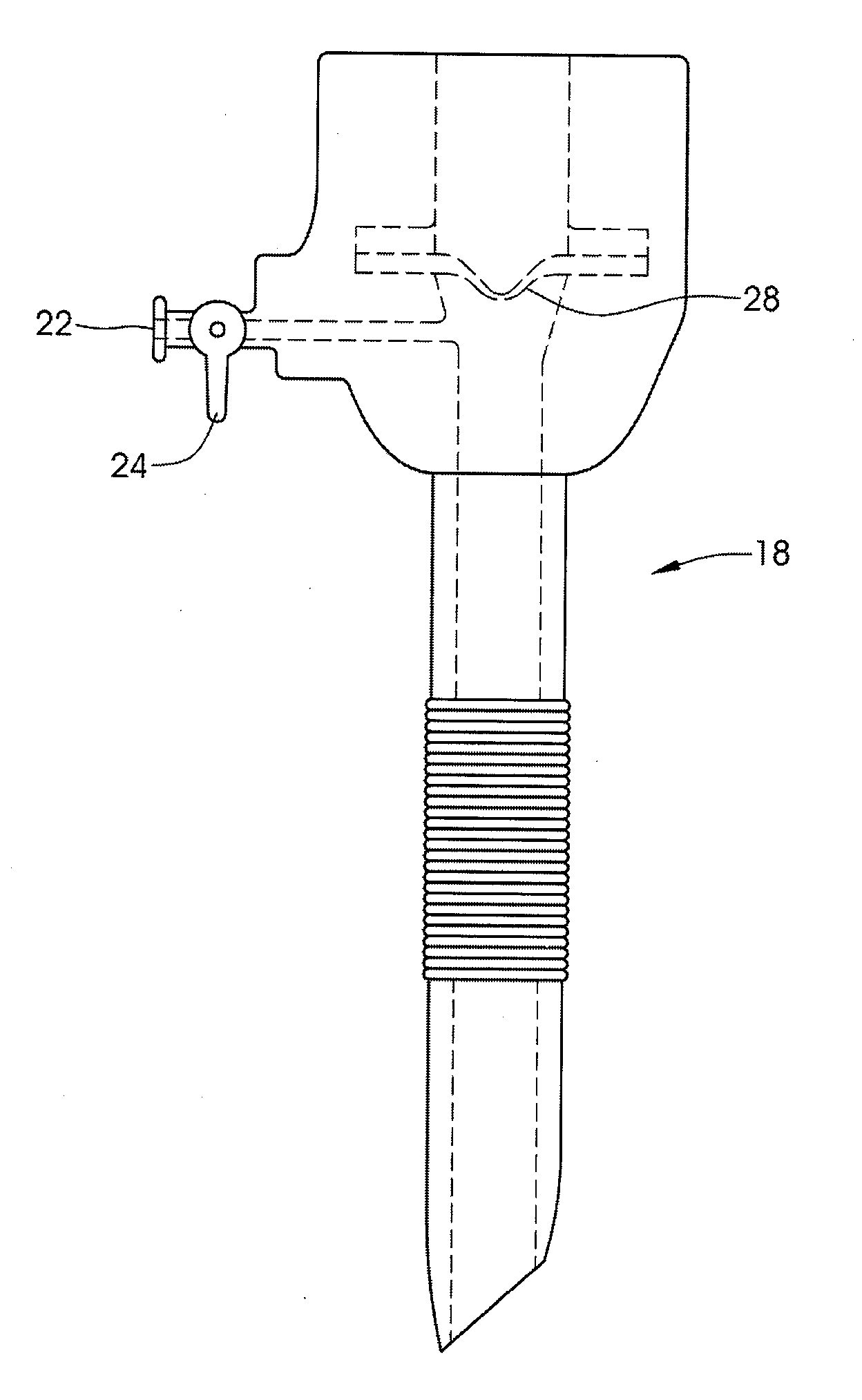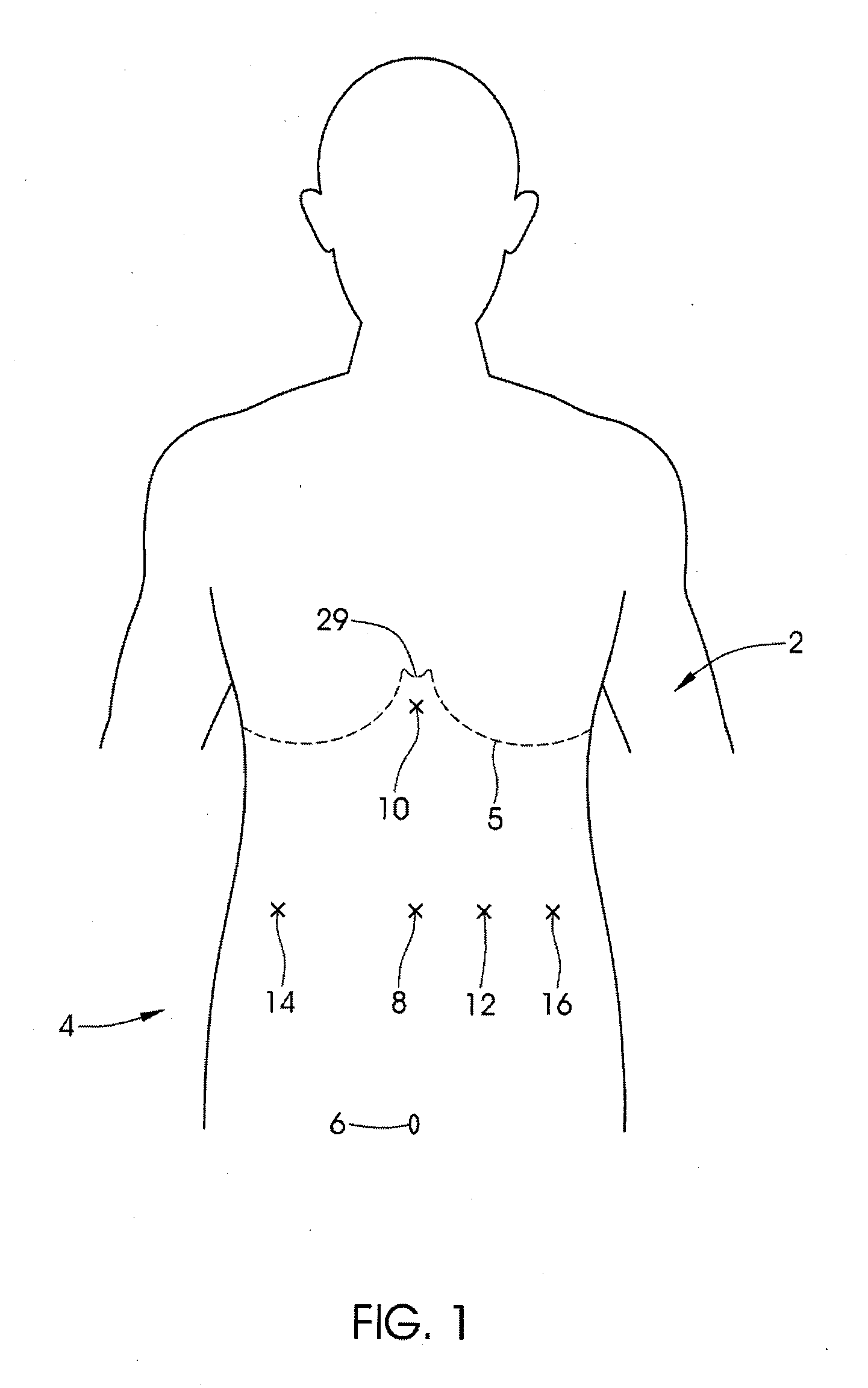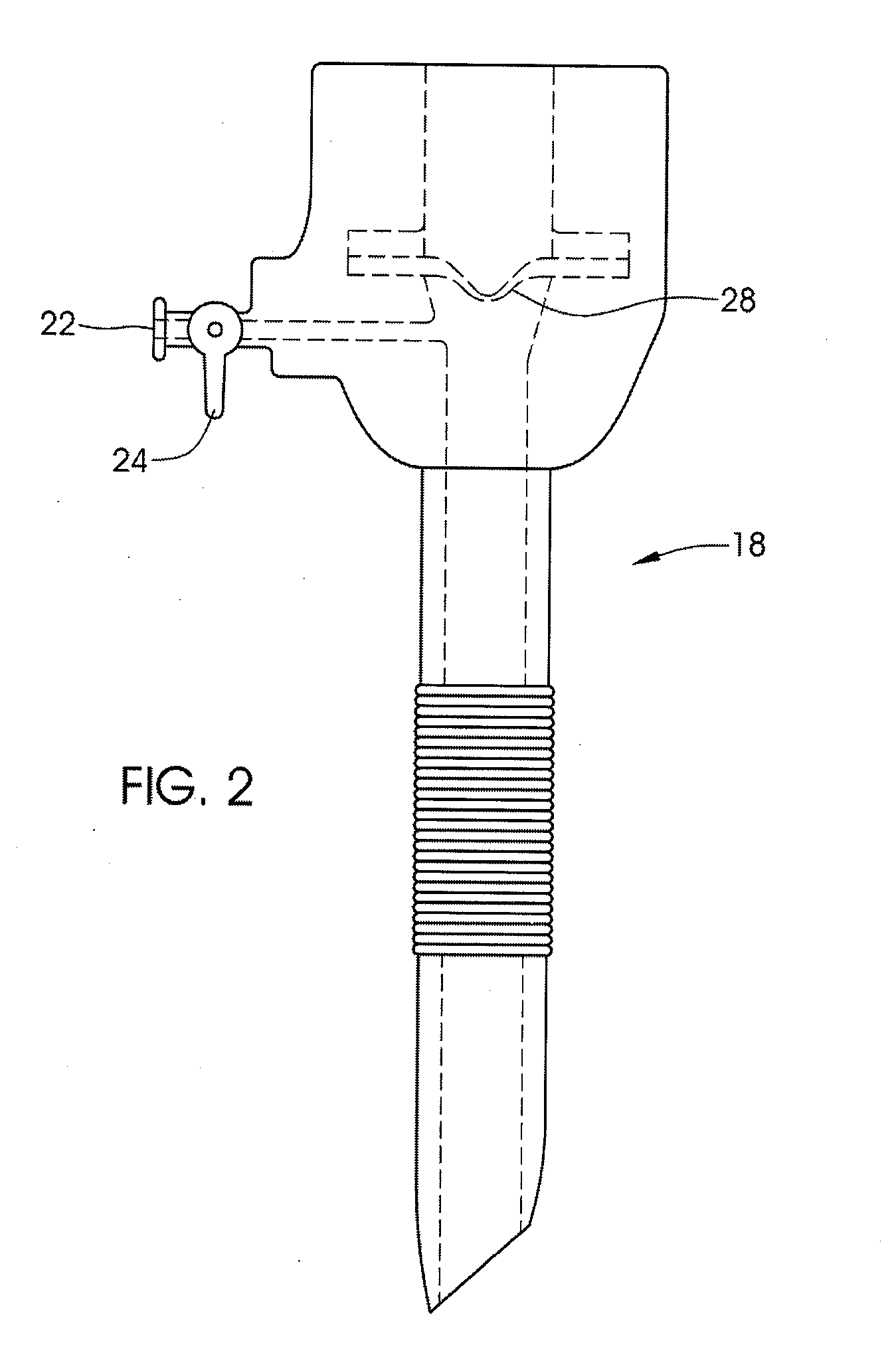Since traditional
weight loss techniques, such as diet, drugs, exercise, etc., are frequently ineffective with many of these patients,
surgery is often the only viable alternative.
Surgical treatments for
obesity continue to be a strong focus of research due to their high level of effectiveness although no treatment is considered ideal.
Open surgery typically requires a ten day hospitalization and a prolonged
recovery period with a commensurate loss of productivity.
This operation, therefore, is both a restrictive and malabsorptive procedure, because it limits the amount of food that one can eat and the amount of calories and
nutrition that are absorbed or digested by the body.
Following this operation, many patients have reported feeling full but not satisfied after eating a small amount of food.
These practices can result in
vomiting, tearing of the staple line, or simply reduced
weight loss.
Major risks associated with VBG include: unsatisfactory
weight loss or weight regain,
vomiting, band
erosion, band slippage, breakdown of staple line, anastomotic leak, and intestinal obstruction.
It is a modification of the biliopancreatic diversion or “Scopinaro procedure.” While this procedure is considered by many to be the most powerful weight loss operation currently available, it is also accompanied by significant long-term nutritional deficiencies in some patients.
Many surgeons have stopped performing this procedure due to the serious associated nutritional risks.
This irreversible procedure, therefore, is both restrictive (the capacity of the
stomach is greatly reduced) and malabsorptive (the
digestive tract is shortened, severely limiting absorption of calories and
nutrition).
The major risks associated with the Duodenal Switch are: bleeding, infection, pulmonary
embolus, loss of too much weight,
vitamin deficiency,
protein malnutrition, anastomotic leak or stricture,
bowel obstruction,
hernia,
nausea /
vomiting,
heartburn, food
intolerances,
kidney stone or gallstone formation, severe
diarrhea and death.
Moreover, such an infection might be spread along the tube interconnecting the
injection port and the band to the
stomach, causing even more serious complications.
Thus, the
stomach might be infected where it is in contact with the band, which might result in the band migrating (eroding) through the wall of the stomach.
Also, it is uncomfortable for the patient when the necessary, often many, post-operation adjustments of the
stoma opening are carried out using a relatively large injection needle penetrating the
skin of the patient into the injection port.
It may happen that the patient swallows pieces of food too large to pass through the restricted
stoma opening.
Again, these measures require the use of an injection needle penetrating the
skin of the patient, which is painful and uncomfortable for the patient, and can sometimes be the cause of infection, thus risking the long-term viability of the
implant.
For example, if some air is inadvertently injected with the liquid (sterile
saline), it can cause some
compressibility to the pressurization media and take away some of the “one-to-one” feel when pressurizing and depressurizing.
As the band inflates, the size of the
stoma shrinks, thus further limiting the rate at which food can pass from the upper stomach pouch to the lower part of the stomach.
The
esophagus, unlike the stomach, is not capable of handling highly acidic contents so the condition results in the symptoms of
heartburn,
chest pain, cough, difficulty
swallowing, or regurgitation.
These episodes can ultimately lead to injury of the
esophagus,
oral cavity, the trachea, and other pulmonary structures.
However, this procedure still requires
surgery, which is more invasive than if an endogastric transluminal procedure were performed through the lumen of the
esophagus or stomach, such as via the mouth.
However, despite the advantages provided by gastric banding methods, they nonetheless suffer from drawbacks that limit the realization of the full potential of this
therapeutic approach.
For example, slippage may occur if a
gastric band is adjusted too tight, or too loose, depending on the situation and the type of slippage.
During slippage, the size of the upper pouch may grow, causing the patient to be able to consume a larger amount of food before feeling full, thus lowering the effectiveness of the
gastric band.
Furthermore, current methods of adjusting gastric bands and restriction devices require invasive procedures.
However, the use of X-
ray procedures in a significant number of patients is highly undesirable.
In addition, while
fluoroscopy can monitor flow of a radio-opaque material such as
barium sulfate, it is not particularly well suited to provide accurate information about the size of the band aperture, the size of the lumen in the alimentary canal where the band is placed, or whether the band is causing secondary problems such as
erosion of the
gastric wall.
 Login to View More
Login to View More  Login to View More
Login to View More 


